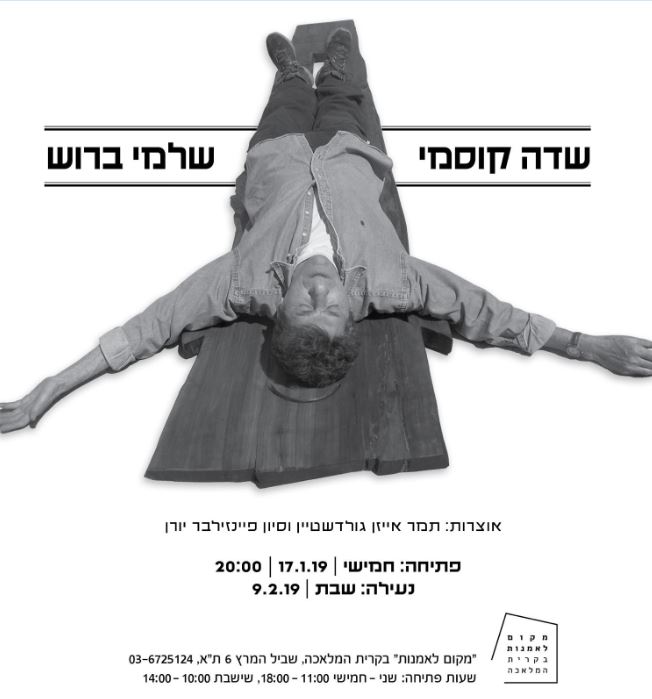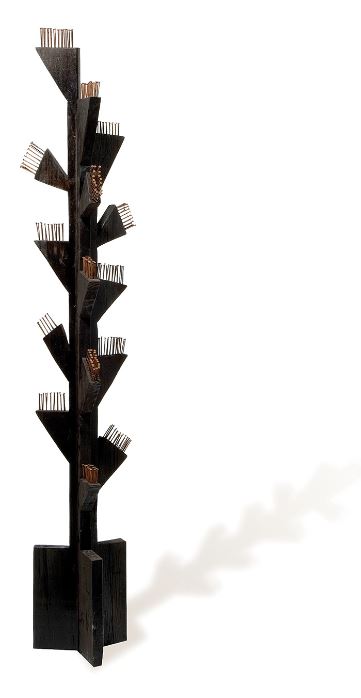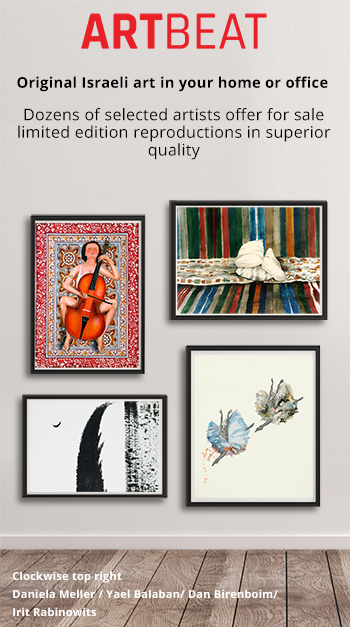Art Shows > Cosmic Field- Shlomi Brosh
Cosmic Field- Shlomi Brosh / Artspace Tel Avivטלפון - 03-6725124 17/01/2019 to - 09/02/2019 Shlomi Brosh, creates a variety and fascinating, lived and worked in Jerusalem from the 70's until his death in 2014. Brosh is an attentive artist with contemporary and passionate passion for materiality, and his work is characterized by graphic, patterned and precise language. He worked in wood, iron, oil paints, stone, terracotta and found objects. With a wide variety of techniques - adhesion, cutting, drawing, engraving, carving, welding - Cypress created a personal version of the ethos of the Land of Israel. In his works there is a constant tension between the concrete connection to the land and the place, which is expressed as Canaanite and formalistic, and questions about life and death, love and human suffering. Brosh's art is not afraid of powerful symbols. Crosses, prayer shawls, cactuses, and hay cubes - the themes in Brosh's works seem to be drawn from conflicted worlds, but what they share is power. They are all iconic symbols, and in a sense, they are all religious. Not only the cross and the prayer shawl, but also the sabra and haystacks, taken from the earth and Israeli labor, the religion of the new Jew. Sometimes it seems that Brosh is desecrating holy symbols, for example, when he lies down on a large wooden cross, his hands spread out. It is a personal relationship to a religious symbol. But Cypress does not really spoil the symbols. Rather, it draws strength from them. He manishes them and plays with them, not with the aim of eliminating them, but from creating new powerful symbols from them. Religious symbols not only signify but act as well, and Brosh in his boldness responds to their call and acts upon them and with them. The work "Cross-Balanced" is featured in the exhibition, recreating a performance that Cyrus edited in 2006. Brosh used the cross as a platform for soul-searching. He built a three-meter wooden cross and lay on it in the crucifix position. Christian crucifixion serves him as a point of departure for reference to general human suffering, sacrificial sacrifice, death and delusion. But in the same breath, work is also a humorous tribute to crucifixion. This is crucifixion as a narcissistic act, which concerns the ego, its relations with the other, self-sacrifice and total love. In "Cross and Bird" of 2009 Cypress was composed of modest wood boxes, painted black, a cross higher than the height of a man, and topped by a black crow. Among the dozens of rusty nails that surround the upper part of the cross, tension metal wires, marking of Via Dolorosa private or collective. A crow and a cross. Religion and superstition echo each other with a sense of imminent disaster. The black bird looks down at the viewer. The simple steel nails mention the Crucifixion, but make it clear that we are here and now. Religion, nationalism and the landscape of the Land of Israel are mixed here. Brosh's interest in the cross fits easily into his preoccupation with Jewish and Israeli symbols, such as the prayer shawl and the sabra. In the series of works "The Tallit" (2005), sanctity and poverty are interchangeable. The work materials are an abandoned corrugated iron that Cyrus found in the street, and framed in simple iron frames. The material is identified with the meagerness of corrugated iron that surrounds structures in old neighborhoods in Jerusalem - and cypress elevates it to the level of holiness. The "Cosmic Field" hay cubes in the exhibition are part of a large installation with dozens of hay cubes made of thin golden wire that were spread over a large coordinate grid in the Jerusalem Theater theater as part of an installation sculpture exhibition at the Israel Festival of 1995. The aluminum wires, Futuristic look. Technology replaces agriculture in the Israeli imagination, which has become the reality of the high-tech nation. But in a sense there is also a return to the original. Agriculture played such an important role in the Zionist imagination, because it had marked the liberation from the Jewish past and the turning to the future. In "The Totem of the Sabra" (2006), the time movement is the opposite. The Sabra is a conflicted symbol: a symbol of the new Jew, borrowed from the landscapes of Palestinian villages and frequently depicted in Christian medieval paintings. Brosh builds a totem: a simple black-painted tree with rusted nails stuck in it. He turns to pagan religion to summon the Sabra, the native Israeli, to be created. In the exhibition "Cosmic Field" at the "Place for Art" gallery, we chose to recreate the performance "Cross-Balanced" and invite the audience to lie down on the large wooden cross. Brosh is a Jerusalem artist in the deep sense of the word, in a city where the cross is an everyday part of the urban and human landscape. Precisely because of this in the Tel Aviv of 2019, his images are relevant in a new way. In secular Tel Aviv, perhaps they are not afraid of the cross, but are deterred by it, when the cross-sectional workers in the city are usually foreign workers or refugees. Against this background, Brosh offers us a new sense of pluralism. In Tel Aviv, pluralism means that nothing is sacred. But perhaps pluralism means that everything is holy? The prayer shawl, the cross, the pile of hay, and the sabra. Curators: Sivan Feinzilber, Yoram and Tamar Eisen Goldstein January 2019 Shalmi Brosh (1939-1944), a graduate of the Bezalel Academy of Art and Design, served as the mayor's adviser on art during the Ehud Olmert period. During his tenure, he served as chairman of the Municipal Sculpture Committee and was responsible for the design of the city for festive events and the director of the city's plastic arts department, as well as promoting and nurturing young artists, Translated using Google translate.location - Artspace Tel Aviv Time - 17/01/2019 to - 09/02/2019 Exhibition opening - 17/01/2019, שעה - 20:00 |
|1|



